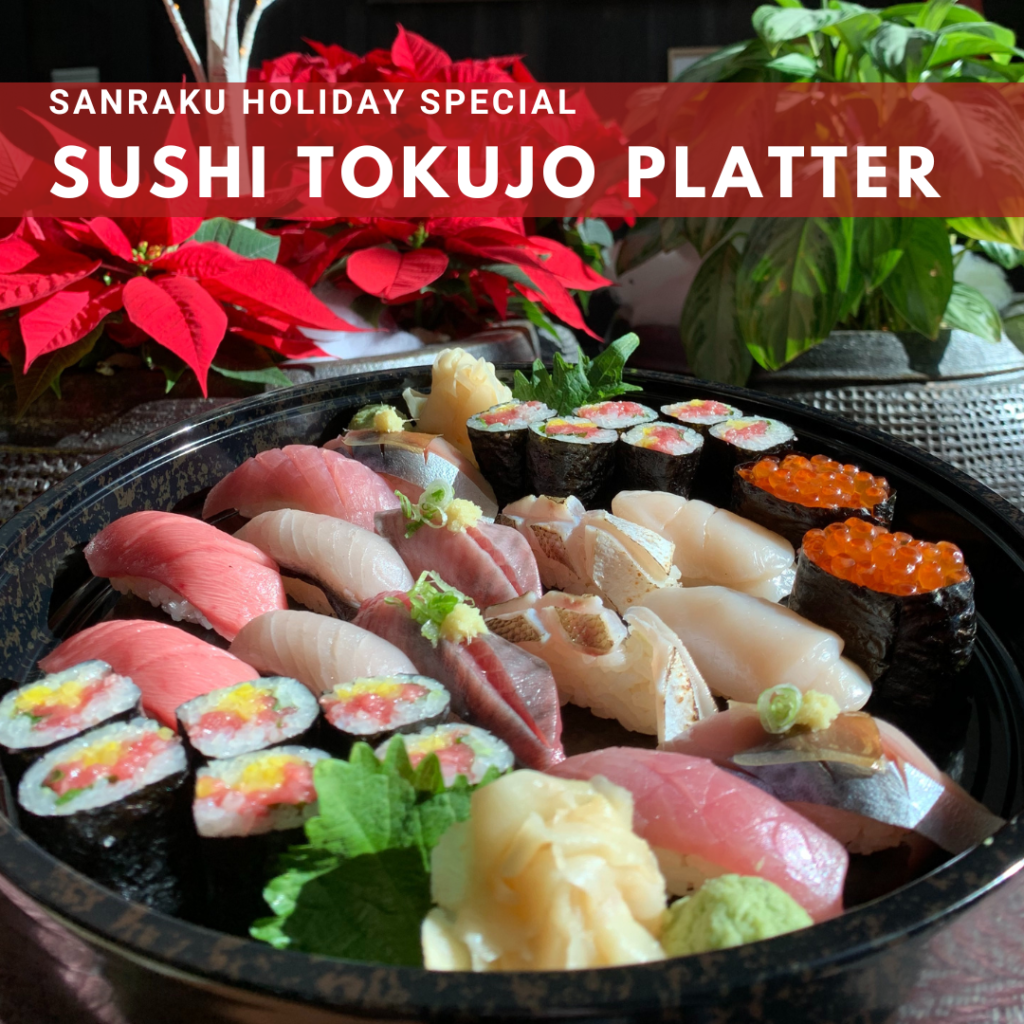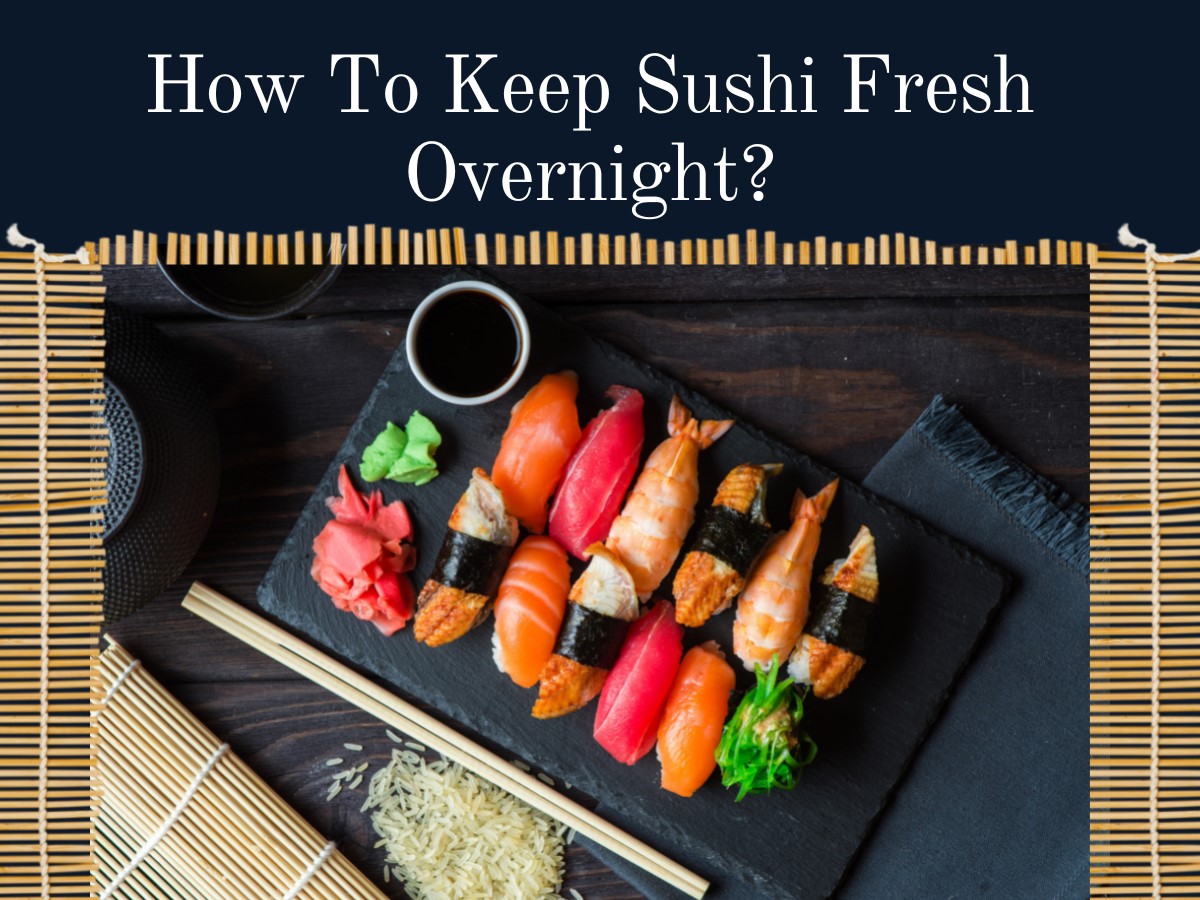Do you want to relish the savory, umami flavor of sushi with a drink but don’t want it alcoholic? Some non-alcoholic drinks pair so well with sushi that you don’t need to drink wine, beer, sake, or cocktails. So do you know what to drink with sushi non-alcoholic? You can try various beverages, such as green teas, soft drinks, mocktails, and fruity sparkly water. These drinks not only make your meal light and digestible but also cleanse the mouth and do not suppress the exotic umami flavor of sushi. So, try pairing a healthy and delicious drink with succulent sushi next time. The following are some tried and tested relishing non-alcoholic drinks.
Table of Contents:
- What To Drink With Sushi?
- What To Drink With Sushi Non-Alcoholic?
- Ginger Ale
- Green Tea
- Sencha
- Ginger Tea
- Genmaicha
- Matcha
- Non-Alcoholic Drinks
- Sweet Orange and Lemon Water
- Pomegranate and Black Currant
- Apple Raspberry Water
- Wrapping Up
What To Drink With Sushi?
If you want to experiment with non-alcoholic drinks and don’t know whether it will go well, follow the rules below to learn to complement the flavor of sushi with refreshing drinks.
- Ensure that your drink does not suppress the acidic, umami flavor of the sushi
- Pair it with a sweet, tangy drink if your sushi is spicy and hot. If you combine spicy sushi with a hot and sparkly beverage, it will burn your taste buds.
- If your drink has lemons, ensure that the acidic level matches the tanginess of the sushi meal. Highly acidic or zesty flavors can overpower the freshness of sushi seafood.
- Also, ensure that your drink is light and digestible enough to prevent the feeling of overeating. At the same time, your beverage should not be so heavy and fulfilling that it makes you bloated or nauseous.
What To Drink With Sushi Non-Alcoholic?
Here are some drinks you can pair up with sushi without worrying about the taste deterioration. These include carbonated drinks such as Ginger ale, green teas, and fruity sparkly waters. Moreover, these drinks are easy to prepare at home and comprise healthy condiments and fruits. The key ingredients are not only nutritious and refreshing but also are the best to ease digestion, so you don’t feel nauseous after eating too much sushi.
Ginger Ale
Ginger ale is the most refreshing and reinvigorating drink you can easily prepare at home. Moreover, the soft drink form of it is readily available at stores. The hero ingredient of this non-alcoholic beverage is ginger, which is added to sparkly or carbonated water and other secret condiments. At home, you can make and store the simple syrup comprising ginger, sugar, and water in the refrigerator for up to a month. For serving, combine the ginger ale syrup with lime juice, club soda, lemon slices, and salt. Serve this ultimate freshening beverage with sushi seasoned in lime, lemon, and pepper.
Green Tea
Green teas are the most common drink in Japan, served with sushi for non-alcoholics. Their green teas come in wide varieties with several special herbs, leaves, and condiments. Green teas made less sweet, umami, and piquant are preferentially relished since the aroma and flavors do not overpower the ultimate sushi tanginess.
Sencha
Sencha is the most common tea in the land of the rising Sun; you may often find it accessible in raw dried leaves. It comes from Sun-grown plants, which is why these leaves are less sweet and umami. With no bursting aroma and flavor, Sencha tea remains the best to complement the sushi’s enriched tangy and umami savoriness.
Ginger Tea
Ginger tea is another great complimentary drink that is not only healthy but also flavorful. The key ingredient is the ginger root, combined with many other ingredients to boost its taste, such as cinnamon, turmeric, mint, lemon, and tea leaves. This herbal drink has many health benefits, making it an awesome non-alcoholic beverage to consume with sushi. Moreover, the spicy flavor of ginger blends well with the sweetness and savoriness of the sushi.
Genmaicha
Japanese also love combining sushi with Genmaicha tea, a mixture of Sencha and roasted brown rice. Genmaicha tea, with its earthy, nutty, and mild taste, combines well with the sweet and umami savoriness of sushi. Therefore, you can have Genmaicha tea as the best non-alcoholic beverage.
Matcha
The Japanese are also fond of the ground tea known as matcha. However, people don’t generally choose it because of its overpowering and astringent flavour that can suppress the ultimate umami flavor of sushi.
Non-Alcoholic Fruity Drinks
This category includes non-alcoholic fruity drinks that can be made frizzy by adding carbonated or sparkling water. You can make them homemade by taking the recipe from youtube. Nevertheless, market-bought options are equally nutritious and refreshing. When adding fruits to your drinks, ensure that your beverage does not get too sweet or acidic; try to balance the flavors to enjoy the original sushi savor.
Sweet Orange and Lemon Water
With its acidic zesty aroma and taste, the sweet orange and lemon drink is the best blend to relish the tanginess of the sushi seasoned with lemon juice and olive oil. What a heavenly combination!
Pomegranate and Black Currant
Pomegranate’s powerfully acidic flavour and the tartaric undertone of black currant combine to create a unique frizzy drink that is unmatched in its ability to balance the tanginess of the sushi.
Apple Raspberry Water
Apple raspberry water is another perfect drink that blends well with the sushi’s fleshy texture and umami flavor. The acidity of apples and berries compliments the tanginess of sushi meals. Moreover, it combines pleasingly with meaty or veggie-filled sushi. You can make it at home or can buy it from the supermarket.
Wrapping Up
Though many people are fond of consuming alcoholic drinks such as wine, beer, sake, and cocktails with sushi, some prefer non-alcoholic beverages for the added health benefits. These drinks include mocktails, soft drinks, green teas, herbal drinks, and fruity sparkly waters that pair well with the sweet and tangy flavor of the sushi. Nevertheless, ensure that your drinks do not overpower the aroma and flavor of the sushi. The above description explains the flavors of these non-alcoholic beverages and how they pair with the savoriness of sushi meals.
If you want to enjoy the real taste of Japanese foods visit Sanraku Japanese Restaurant





